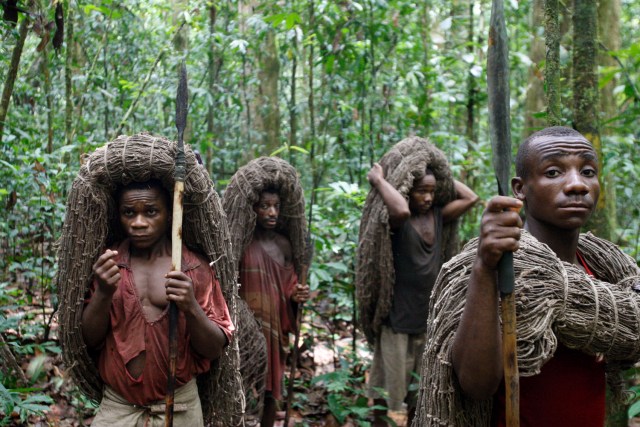" Do black people get hotter in the sun?" is a question that gets asked a lot on the internet, but its actually a good question.
We know that dark objects absorb more visible light, and possibly light in other spectrum too, and thus they become warmer in the sunlight. IIRC, Basically, photons from light excite the electrons of an object, and make it warmer.
Objects that reflect light appear white or shiny.
Objects that are good absorbers of light energy are also good emitters of light energy.
If you notice, thermal bottles are shiny in the inside, so they can reflect the energy that the warm liquid is putting out back into the liquid instead of letting the heat energy escape. I also notice that some expensive thermal coats have shiny inner lining that does the same thing. So, these materials are probably reflecting not just visible light but also infared light.
Now, lets get back to the question at hand. Since melanin is known to absorb UV light, does that mean it is radiating that energy out as infrared?
Maybe melanin also absorbs other spectrums of light that we don’t see like infrared, microwave, and radio-waves.
Maybe it radiates heat away from the body, and can actually cool someone down. To me this sounds plausible because even people that live in the densely forested areas of Africa are still just as dark as those that live in open Savannahs.

On the other hand, if melanin is both an absorber and emitter of heat energy, then that would mean in places where the outside temperature is hotter than your body temperature, then too much melanin could make your overheat.
Notice how the native people of the deserts of botswana are lighter than those of other parts of Africa.
In the Kalahari desert, and many other deserts, it can get over 110 F. The human body temperature is around 98.6 F. It seems that people in hot desert climates generally aren’t that dark.
Some of you might say a desert doesn’t have as much uv light becaue deserts are usualy not found on the equator. That may not be true. In a desert the ground is made of rock and sand; that tends to reflect uv light back up.
In a jungle or even a grassy savannah, there’s grass and dark soil that can absorb some of this uv light. In a desert you often get clear and cloudless days, but in a wetter climate, you have clouds to block at least some of the Uv light. I think you’re more likely to get sunburnt in a desert.


